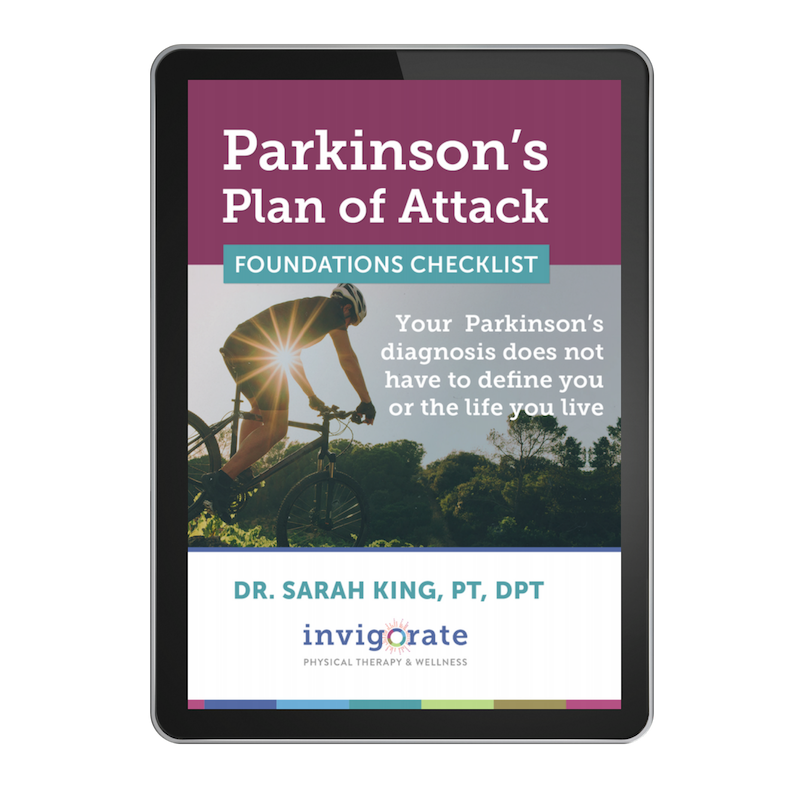Guest post by Danielle K. Roberts of Boomer Benefits
As far as chronic illnesses go, Parkinson’s Disease can be an expensive health condition to manage. Parkinson’s News Today reported that yearly drug expenses for a person with PD can exceed $2,500 and costs of surgery may exceed $100K. The combined direct and indirect costs in the U.S. is estimated to be around $25 billion.
Fortunately, for people with Parkinson’s over the age of 65, Medicare is here to help with the costs of treatment, providing inpatient, outpatient and drug benefits.
Parkinson’s Treatments Covered by Medicare
Treatment plans are different for each patient, but most people with PD take prescription medications. Dopaminergic medications such as carbidopa-levodopa help to replace lost dopamine in the brain. Nearly all Part D plans offer coverage for medications related to PD.
After years of taking this medication, many patients begin to experience changes in the effectiveness of their symptom control. These patients who have done well on carbidopa-levodopa can be considered for a Medicare-covered therapeutic surgery called Duopa therapy. This procedure will allow for the medication to be delivered in a gel form directly to the intestines.
A surgeon will make a small hole, called a stoma, in the wall of the stomach for implantation of a tube that delivers the medicine into your system. The patient then connects a new cassette of Duopa each morning via a Duopa pump.
There is a second type of surgery that treats PD called deep brain stimulation (DBS). During this more invasive surgery, your physician inserts a wire into your brain that connects to a device implanted into your chest. The device then delivers pulses through the lead directly to your brain to assist in controlling some of the movement symptoms associated with Parkinson’s.
All of these treatments are covered by Medicare when medically necessary. Let’s look at how the different parts of Medicare work together to provide inpatient, outpatient and prescription drug benefits.
Parkinson’s Disease and Medicare Coverage
Original Medicare is made up of Part A and Part B.
Medicare Part A is known as Medicare’s hospital coverage and it covers your room and board while you are an inpatient in the hospital. Part A also covers up to 100 days in a skilled nursing facility (SNF) after a qualifying hospital stay, as well as blood transfusions and hospice care.
Patients qualify for hospice when their doctors certify terminal illness with life expectancy of 6 months or less. The patient chooses palliative care instead or continued care that attempts to cure illness. This end-of-life care may include pain management as well as benefits like social worker visits and spiritual care.
Medicare Part B, on the other hand, pays for your outpatient treatment. This includes expensive things like outpatient surgeries, diagnostic imaging and various types of medical equipment. Part B also covers ordinary outpatient services like visits to your physician, lab-work, diagnostic imaging, injectable medications, and physical therapy.
Medicare Part B is the part that will cover any outpatient surgeries as well as the cassettes of Duopa used with a Duopa pump.
Medicare also has a voluntary drug coverage program called Medicare Part D. This is essential for anyone with PD, as it will provide coverage for any retail outpatient prescriptions that you may need to take. These plans are offered by private insurance companies, but each Part D drug plan must follow federal guidelines.
There are often 20 or more Part D drug plans offered in most states, and each drug plan has a formulary that lists all the different medications covered by the plan. However, you can search for the most cost-effective plan for you by using tools on Medicare ‘s website. It’s a good idea to run an analysis using Medicare’s Plan Finder Tool so that you’ll have an annual estimate of approximately what you’ll spend on outpatient medications each year.
Your Medicare Cost-Sharing for Parkinson’s Disease
Just like other health insurance you’ve had in the past, Medicare has deductibles, coinsurance, and copays that you must pay when you use Part A and B services. In the insurance world, this is called “cost-sharing”, as you are sharing the cost of your healthcare with the insurance company.
In the event of a hospital stay, you as a Medicare beneficiary will be expected to pay the Part A deductible, which will be $1,364 in 2019. When you enter the hospital, this initiates a “benefit period”. After you satisfy the deductible, Medicare covers the rest of your inpatient expenses for the next 60 days. Should you have a longer stay, you will begin to also incur daily hospital copays.
It’s important to understand that you can pay the Part A deductible more than once in a calendar year. When you leave the hospital, your benefit period will close 60 days after your last day in the hospital. Should you enter the hospital again after that, a new benefit period begins, and you pay the Part A deductible again.
You also have cost-sharing under Medicare Part B, which has just an annual deductible of $185 in 2019. This deductible occurs only once per year, meaning you will pay the first $185 out-of-pocket in 2019 before benefits kick in. After it is satisfied, Part B will pay for 80% of your covered services. You must pay the other 20%. This is called your coinsurance.
Part D plans work separately from Parts A and B. Each plan sets its own premiums, deductibles, copays, and coinsurance. Preferred generic drugs tend to be the least expensive, and specialty drugs tend to be the most expensive. You’ll want to consult your drug plan’s Summary of Benefits to learn what cost you are responsible for on the plan when you fill medications.
Medicare Plans and Parkinson’s Disease
Almost immediately after Medicare was first introduced in 1965, insurance companies developed Medicare supplement plans to fill in these gaps in Medicare. These plans pay after Medicare to help you cover your Medicare cost-sharing. When you first become eligible for Medicare, you can enroll in any MediGap plan you like during the first six months after your Part B effective date, regardless of pre-existing health conditions. PD patients would be wise to take advantage of this opportunity to enroll without fear of being declined for coverage.
These plans allow you to see any provider who accepts Medicare nationwide, so many people appreciate their flexibility.
Some beneficiaries may choose instead to enroll in a Medicare Advantage plan. These plans are also called Part C plans, and they are sold by private insurance companies. Plans typically have either an HMO or PPO network.
Members agree to get their treatment from the plan providers or pay more for going out of the network. These plans are less expensive than MediGap plans but have more cost-sharing on the back end. If you opt for a Medicare Advantage plan, be sure to check that your providers are in the network before you enroll.
MediGap vs. Medicare Advantage Plans for Parkinson’s Disease
Medicare beneficiaries face a choice between MediGap plans or Medicare Advantage plans. Some individuals with PD may like the freedom of access that MediGap plans offer. You have the flexibility to see any Medicare provider nationwide.
Other individuals may enjoy the lower premiums of the Part C Medicare Advantage plans and feel okay with using the plan’s network and paying copays as they go along.
Just be sure you carefully review all of your options before committing to the coverage that you feel fits you the best.
Watch the Interview with Danielle K Roberts:
ABOUT THE AUTHOR
Danielle K Roberts is a Medicare insurance expert and co-founder of Boomer Benefits, where she and her team help Medicare beneficiaries navigate their benefits and select suitable supplemental coverage.









